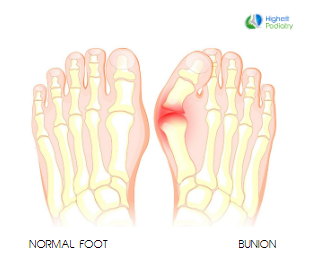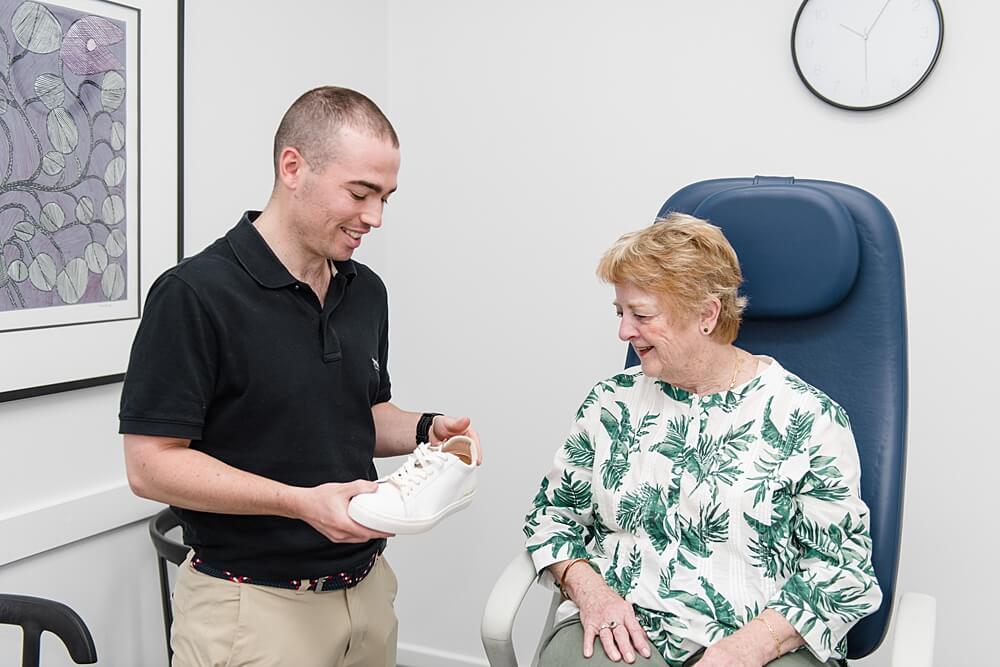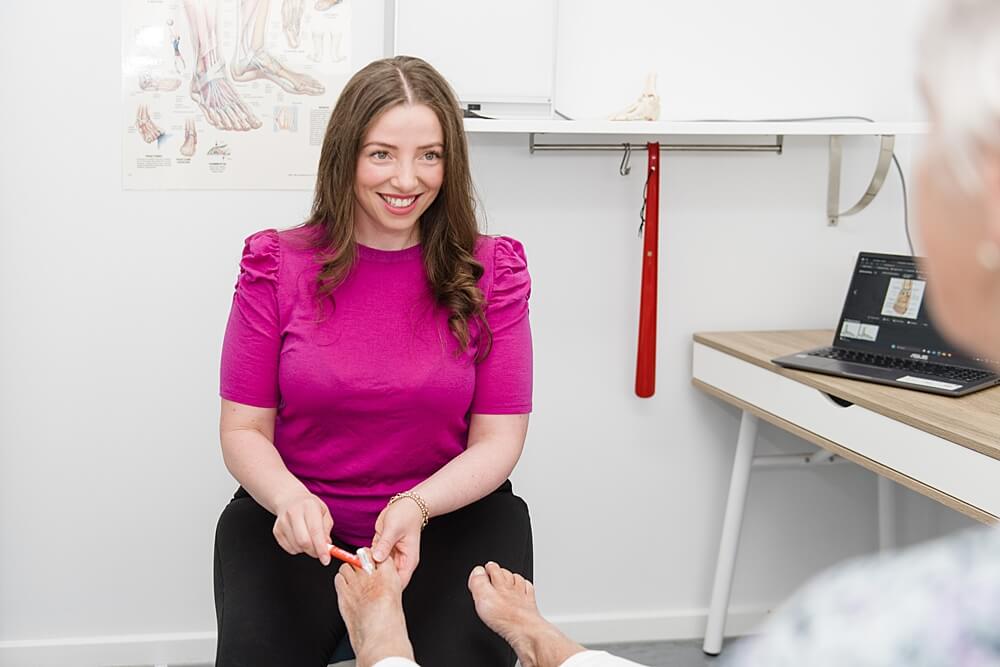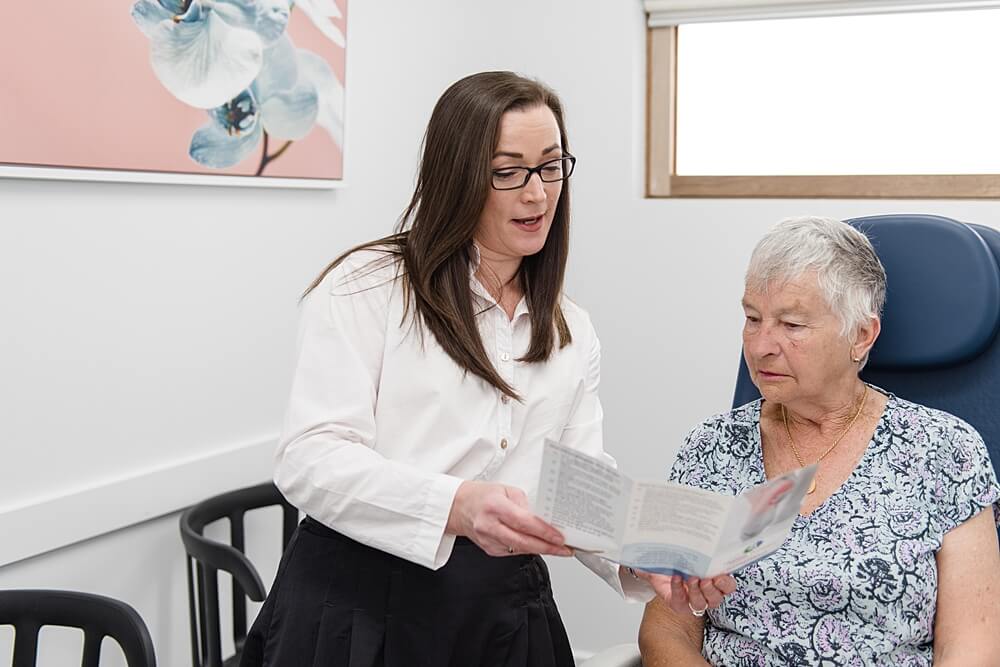Bunion Treatment: Say Goodbye to Painful Bunions with Non-Invasive Treatment!
What is Bunion?
Medically, a bunion is referred to as hallux valgus or hallux abducto valgus. Hallux means the great toe. Abducto valgus refers to the angulation the bunion forms and means the great toe is drifting outwards on the foot. The surgery used to correct bunions is also known as abducto hallux valgus correction.

What Causes Bunion?
Bunions are believed to be directly caused by foot shape, structure and function.
Bunions are most widely considered to be due to an imbalance in the forces that is exerted across the joint during walking. This is most likely the reason for the higher prevalence of bunions among women.
Bunions are not inherited, but do tend to run in families. What is inherited is the poor or faulty foot type, that mechanically can lead to the instability around the joint that will eventually lead to bunions – how soon, how quickly and how bad they are or become is varied.

What Bunions Can Be Painful ?
A hammer toe of the second toe is common with bunions. Bunions are often painful when walking, can cause skin irritation like corns, callus and blisters. Large bunions can make finding suitable footwear difficult.
Treatment for Bunions
Bunions are almost always progressive and tend to get larger and more painful with time.
The initial goal of treatment options is to relieve pressure on the bunion and any symptoms that may be present and to halt or slow the progression of the joint deformity.
There is no effective way to ‘get rid of’ a bunion without surgery known as toe joint correction or abducto hallux valgus correction.
Management of bunions can include:
Padding to reduce pressure
Padding is a non-invasive bunion treatment that involves using cushions or pads to reduce pressure on the affected area and provide toe joint correction.
The pads can be made from various materials, such as felt or silicone, and are designed to fit around the bunion and provide a barrier between the shoe and the foot.
By reducing pressure and friction on the bunion, padding can help relieve pain and prevent the development of further complications, such as corns and calluses.


Physical therapy
Physical therapy is a form of bunion treatment and toe joint correction that involves exercises and stretches designed to improve the strength and flexibility of the foot and toe muscles.
By doing exercises to stretch and strengthen the affected area, patients can reduce pain and prevent the progression of the bunion.
Physical therapy may also include massage, ultrasound therapy, or other modalities to reduce inflammation and promote healing.
Corns and callous treatment
Corns and calluses are common complications of bunions, and can cause significant pain and discomfort.
Treatment for corns and calluses may involve using pads or cushions to protect the affected area, as well as over-the-counter medications to soften the skin and reduce inflammation.
In severe cases, your doctor may need to remove the corn or callus using a scalpel or other surgical instrument.
Orthotics
Orthotics are custom-made shoe inserts designed to provide support and stability to the feet. They can be used to correct foot posture reducing the stresses on the feet that can lead to bunions.
By providing proper support and alignment to the feet, orthotics can help relieve pain and prevent the development of further complications.
Exercises
Exercises can be an effective form of bunion treatment, as they can improve the strength and flexibility of the foot and toe muscles, reduce inflammation, and prevent the progression of the bunion.
Exercises may include stretches, toe curls, or other movements designed to promote proper alignment and movement of the foot.
Wider footwear
Wearing shoes that fit properly and have a wide toe box can help relieve pain and prevent the development of bunions.
By providing enough space for the toes to move freely, wider footwear can reduce pressure and friction on the affected area, and prevent the development of further complications.
It is important to avoid wearing shoes that are too tight or narrow, as these can exacerbate the symptoms of bunions and cause further damage.
What to expect after Bunion Surgery
Following surgery, patients will also receive specific instructions for post-operative care, such as keeping the foot elevated and avoiding weight-bearing activities for a certain period of time. They may also need to take pain medications or antibiotics as prescribed by their doctor to manage pain and prevent infection.
In the first few days after surgery, patients may experience swelling, bruising, and discomfort. They may also need to use crutches or a wheelchair to move around. As the foot heals, patients may gradually be able to increase their activity levels and begin physical therapy to improve strength and range of motion in the foot and ankle.
It is important for patients to follow their doctor’s instructions closely during the recovery period to ensure a successful outcome. They should also keep all follow-up appointments to monitor their progress and address any concerns or complications that may arise.
What to expect after Bunion Surgery
Following surgery, patients will also receive specific instructions for post-operative care, such as keeping the foot elevated and avoiding weight-bearing activities for a certain period of time. They may also need to take pain medications or antibiotics as prescribed by their doctor to manage pain and prevent infection.
In the first few days after surgery, patients may experience swelling, bruising, and discomfort. They may also need to use crutches or a wheelchair to move around. As the foot heals, patients may gradually be able to increase their activity levels and begin physical therapy to improve strength and range of motion in the foot and ankle.
It is important for patients to follow their doctor’s instructions closely during the recovery period to ensure a successful outcome. They should also keep all follow-up appointments to monitor their progress and address any concerns or complications that may arise.
Tips for Keeping Bunions at Bay
There are several preventative measures you can take to help keep bunions at bay:
Wear properly fitting footwear
It’s important to wear properly fitting shoes that don’t squeeze the toes together. Shoes that are too tight can force the big toe inward, exacerbating the problem and causing the bunion to become more pronounced. Avoid high heels or narrow-toed shoes for extended periods of time, as these can also contribute to the development of bunions. Instead, opt for shoes with a wider toe box and a lower heel to help spread out the pressure on your feet.
Maintain a healthy weight
Maintaining a healthy weight can also help reduce pressure on the joints in your feet. Extra weight puts added strain on your feet and can exacerbate existing foot problems, including bunions. By maintaining a healthy weight through exercise and a balanced diet, you can help alleviate some of this pressure and reduce your risk of developing bunions.
Stretch properly before exercise activities
Another preventative measure is to stretch before exercise activities that involve your feet. This can help improve the flexibility of the muscles and tendons in your feet, making them less prone to injury or strain. Incorporate simple stretching exercises into your daily routine, such as toe curls, ankle circles, and calf stretches, to keep your feet in top condition.
Shoes for Bunions
At Highett Podiatry, we can recommend appropriate footwear for bunions.
FAQ's
What can a podiatrist do for bunions?
- Podiatrists can manage the symptoms and slow down the progression of bunion formation.
- Podiatrists can also advise on minimally invasive surgery options, arrange X-rays and a referral to a surgeon for hallux- abducto- valgus correction.
Will orthotics fix my bunions?
- Orthotics can be used to control the foot function, eg. pronation, to slow down the progression of bunions.
- Orthotics offload the area to reduce pain in the joint.
Are bunions genetic? My mum has bunions, will I get them too
- Bunions can have a hereditary element where a child inherits the same foot posture, shape and function as their parent, causing the incidence of bunion formation to be higher.
Will a night splint fix my bunion?
- Night splints can be used to slow down the progression of bunions and the shift of the bone, unfortunately,they will not straighten the toe.
Can I prevent bunions from developing?
- While some factors that contribute to the development of bunions (such as genetics) cannot be changed, there are steps you can take to reduce your risk of developing bunions.
- These steps include wearing comfortable shoes that fit well, maintaining a healthy weight, and doing exercises to strengthen your feet and toes.
Always Consult A Trained Professional
The information in this resource is general in nature and is only intended to provide a summary of the subject matter covered. It is not a substitute for medical advice and you should always consult a trained professional practising in the area of medicine in relation to any injury or condition. You use or rely on information in this resource at your own risk and no party involved in the production of this resource accepts any responsibility for the information contained within it or your use of that information.
